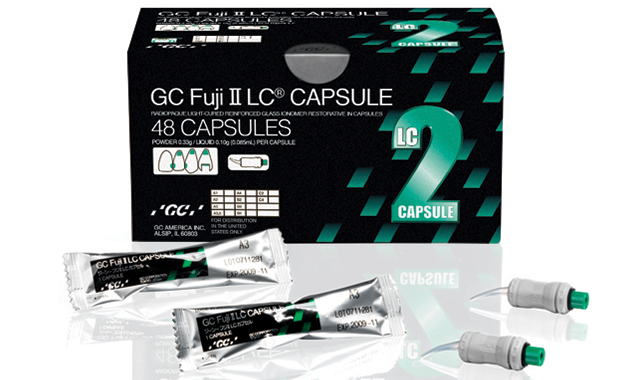How to create long-lasting restorations with GC Fuji II LC
Why one clinician has been using this resin-reinforced glass ionomer for two decades.

Dr. Daniel Ward, a Dentist based in Columbus, Ohio, is no stranger to GC Fuji II LC®. In fact, he’s been using the light-cured, resin-reinforced glass ionomer for more than 20 years. He first heard about the material during a presentation at a local study club in the early 1990s and started using it as a base under large composites. Patients immediately began saying that they didn’t have the post-operative sensitivity that they had experienced in the past with composite restorations.
“Over the next several years, I was becoming frustrated by patients who would come in with recurrent decay around the margins of their composite restorations,” Dr. Ward says. “For that reason, I began using GC Fuji II LC as a restorative material and not just as a base in my patients who were at greater risk for decay. When I changed to using GC Fuji II LC, rather than my traditional light-cured composite, I noticed that they were lasting quite a bit longer.”
In addition to using GC Fuji II LC as a base underneath composites, Dr. Ward uses the material for Class III and Class V restorations as well as in buccal and lingual repairs around crown margins. He also prefers using it for crown buildups.
More from the author: 5 surefire ways to get an OSHA inspection
“Glass ionomers are wonderful for crown buildups,” he says. “First, they’re very technique insensitive. They’re very simple to use, so you don’t have to go through a lengthy bonding procedure. Secondly, the bond to tooth structure is consistent and long-lasting. The bond in deep areas with composites may change over time. … With glass ionomers, that bond strength doesn’t decrease over time, so you have the added advantage that you know it’s going to strongly adhere over a long period of time.”
Glass ionomers play a role when it comes to creating esthetic restorations. With more patients requesting picture-perfect smiles, products like GC Fuji II LC are crucial.

“Our patients are coming in and they all want esthetic, tooth-colored restorations, but the challenge is how can we provide tooth-colored restorations that are going to last? That’s where glass ionomers are ideal because they often help the restorations to last longer,” Dr. Ward says. “The No. 1 cause of replacing composite restorations is recurrent decay. So, if you use a material that helps cut down on recurrent decay, then that’s an ideal material to use with many of our patients.”
The final way Dr. Ward uses GC Fuji II LC is for transitional restorations, particularly with patients who need a quick yet durable solution.
“Let’s say that it’s Friday around 4:30 p.m. and a patient comes in and they broke part of their tooth. They ask if you can put something over it to get them through. Obviously, when it’s late in the day, you need to figure out a quick, easy way to put something over the area that’s missing. With GC Fuji II LC, you don’t need to anesthetize, and it holds up very well over the interim. How do I know? I have a GC Fuji II LC restoration that’s in my upper left first molar that’s been there for six years.”
Dr. Ward enjoys the fact that GC Fuji II LC is easy to use and place.
Trending article: 6 ways to help patients overcome fear of the dentist
“Glass ionomers require very exact and precise manufacturing techniques,” he says. “That’s why few companies make them. The name GC is really synonymous with glass ionomers. They’ve been making them for decades. So, it really comes down to trust. I trust the Fuji products. They work well in my hands and they last.”
Patients of all ages experience tooth decay, so it’s important for clinicians to use products that are going to be long-lasting. For Dr. Ward, that often means using GC Fuji II LC.
“Patients are keeping their teeth longer and patients are living longer, so we have to use myriad ways of helping these people keep their teeth for their lifetimes,” he says. “Without products like GC Fuji II LC, I could not practice. I use it on a daily basis. It helps my patients to keep their smiles for a lifetime."
ACTIVA BioACTIVE Bulk Flow Marks Pulpdent’s First Major Product Release in 4 Years
December 12th 2024Next-generation bulk-fill dental restorative raises the standard of care for bulk-fill procedures by providing natural remineralization support, while also overcoming current bulk-fill limitations.